Abstract
1. The superior colliculus has been studied in intact cats and in cats with visual cortex lexions by recording the responses of single tectal units to visual stimuli. 2. Three classes of units have been identified in the superficial layers of the colliculus in these visually decorticate cats. 3. One class, comprising 5% of the units studied, has receptive fields organized concentrically in a manner similar to retinal ganglion cells. 4. The second class, comprising 12% of the units studied, responds to stimulus velocities over 300/sec, responds well to both small and large stimuli, and can be driven by strobe flashes at frequencies up to 35--40/sec. These units are termed 'flicker' cells. 5. The third class comprising 83% of the units studied, responds best to stimuli which are not larger than the activating region of the receptive field, moving at relatively low velocities. These units show strong suppressive surrounds which are sensitive to higher velocities of stimulus movement than the central activating region. Responses from the activating region in these units are dramatically inhibited by flickering dhanges in the level of background illumination. 6. In intact cats few units are found which are strongly inhibited by background flicker. 7. It is suggested that a high-velocity sensitive element such as the 'flicker' cell or phasic retinal ganglion cell is responsible for the flicker-induced inhibition of collicular units in the visually decorticate cat.
Full text
PDF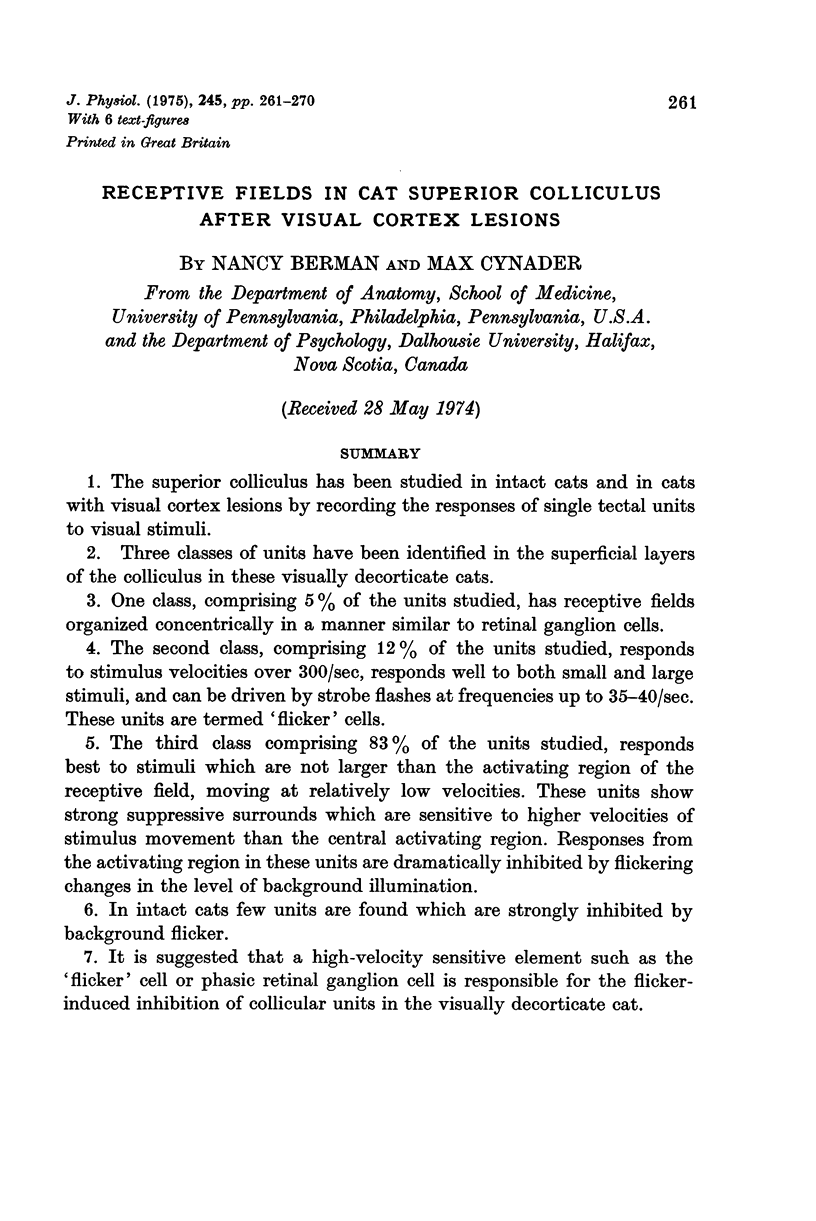
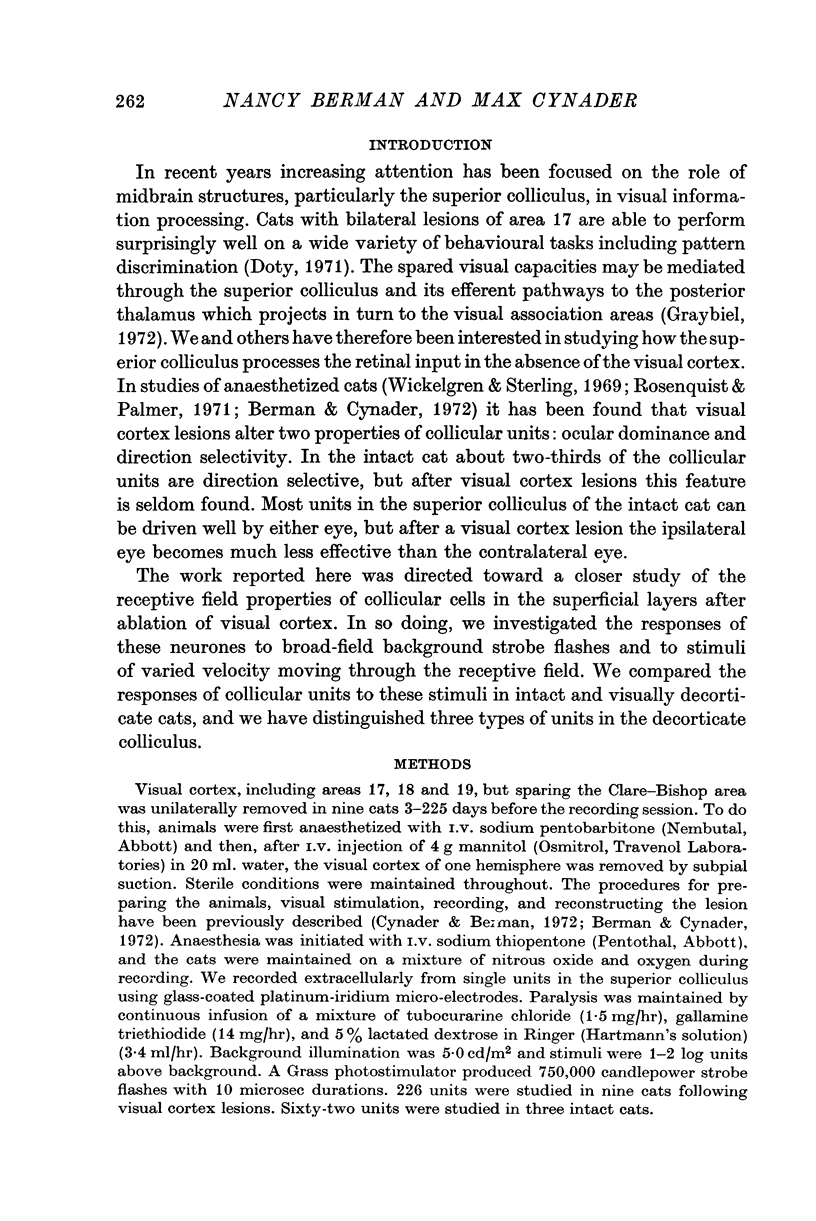
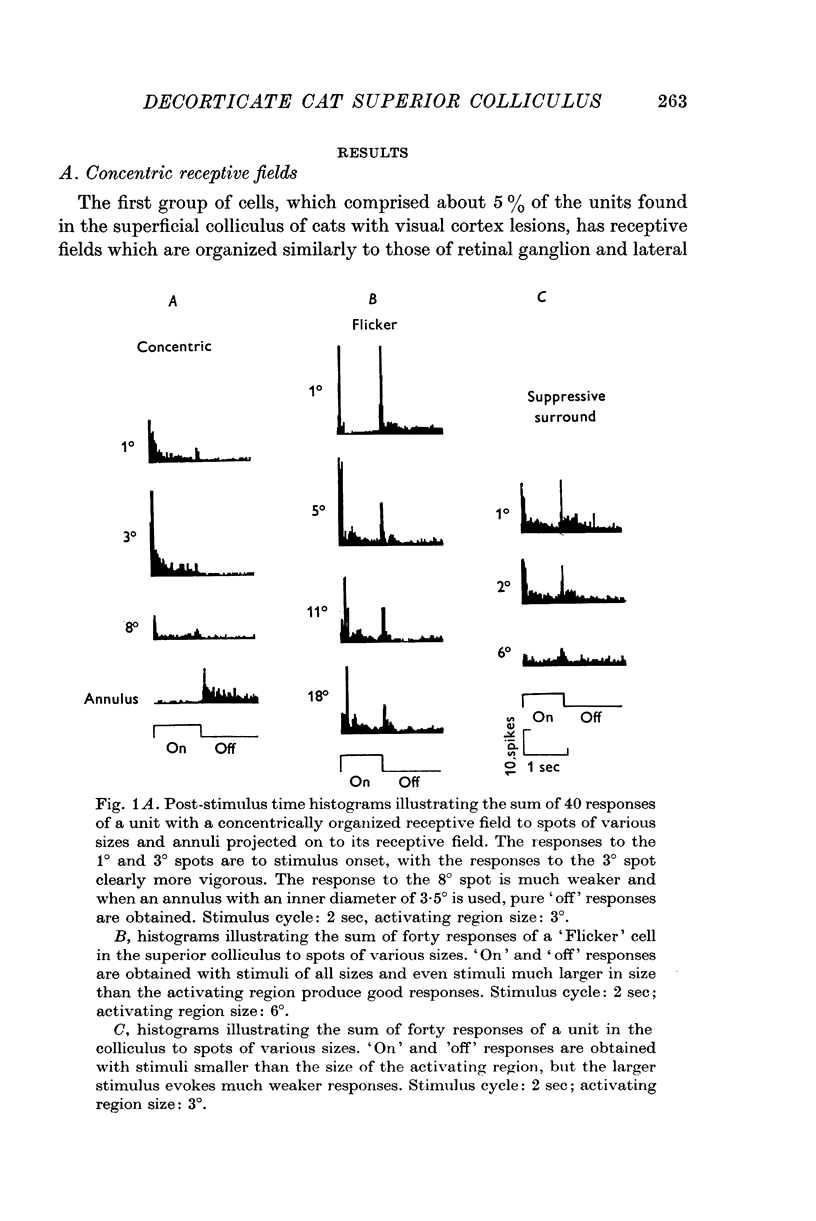
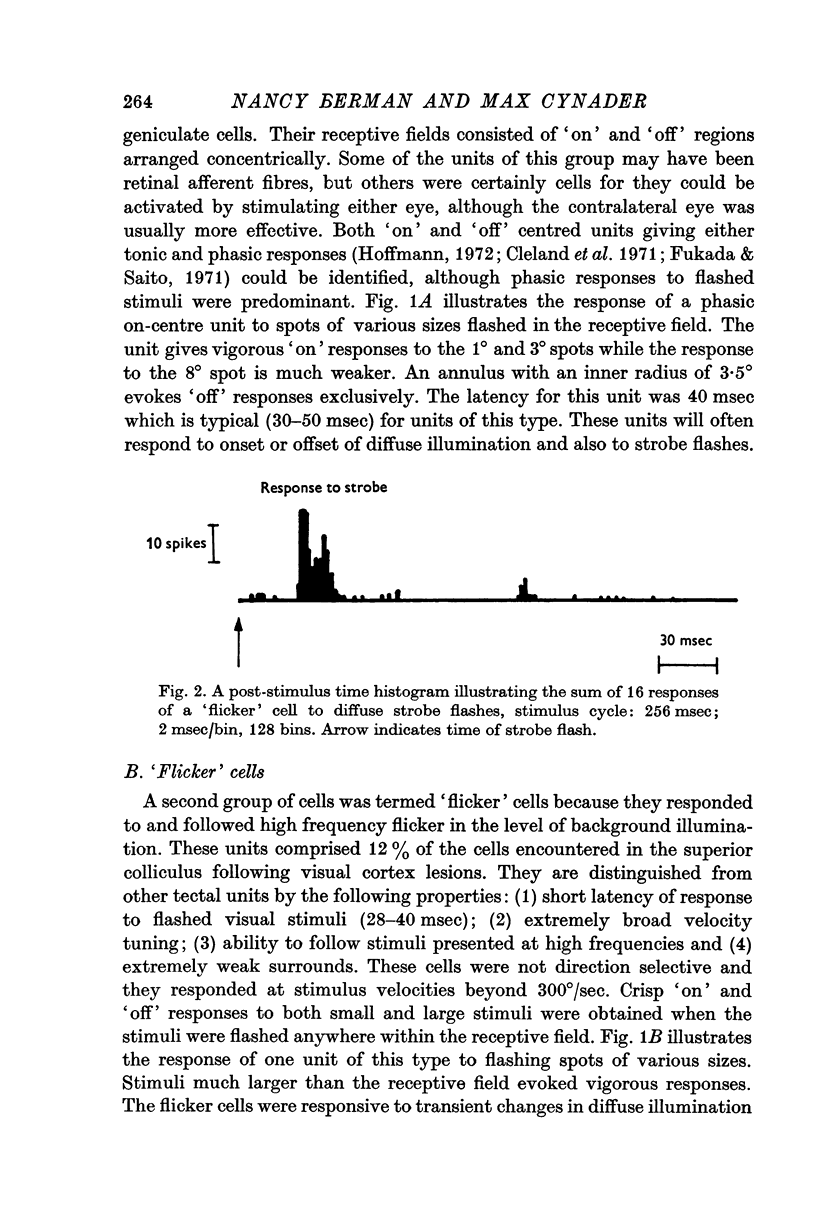
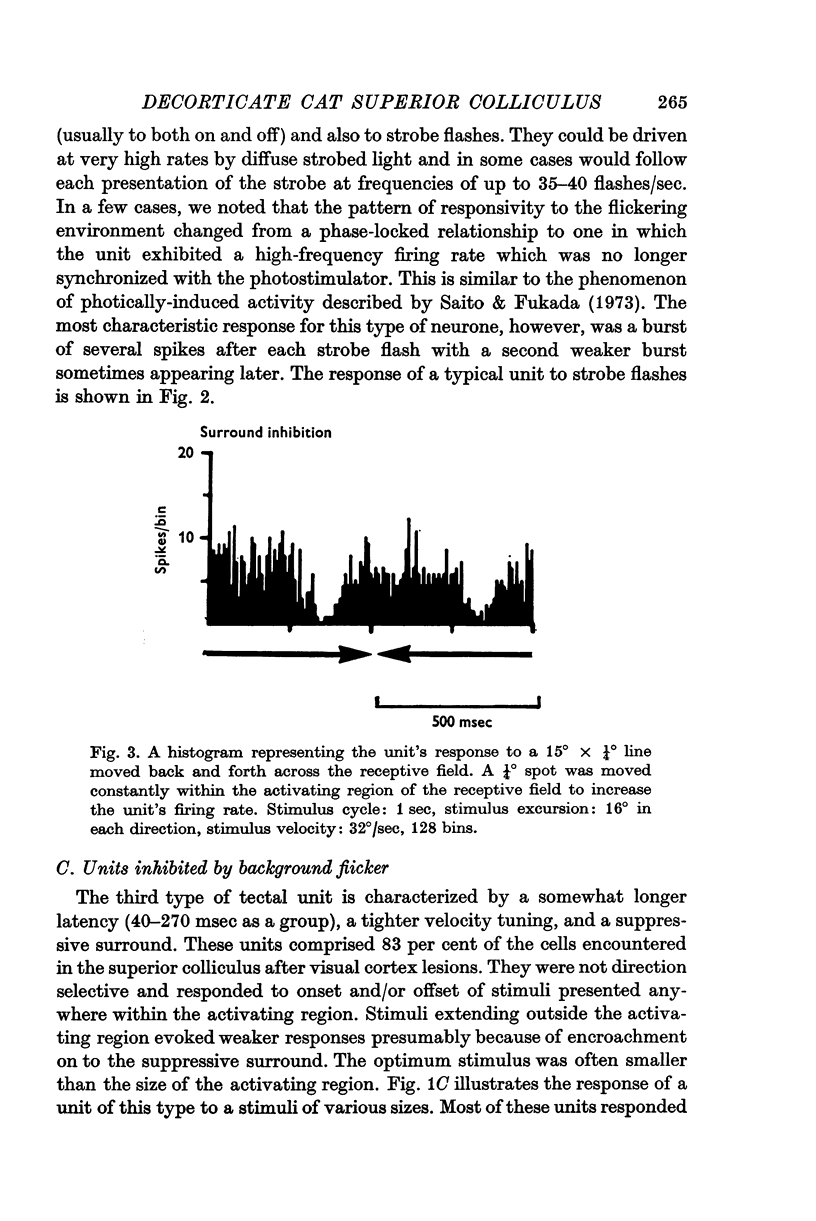
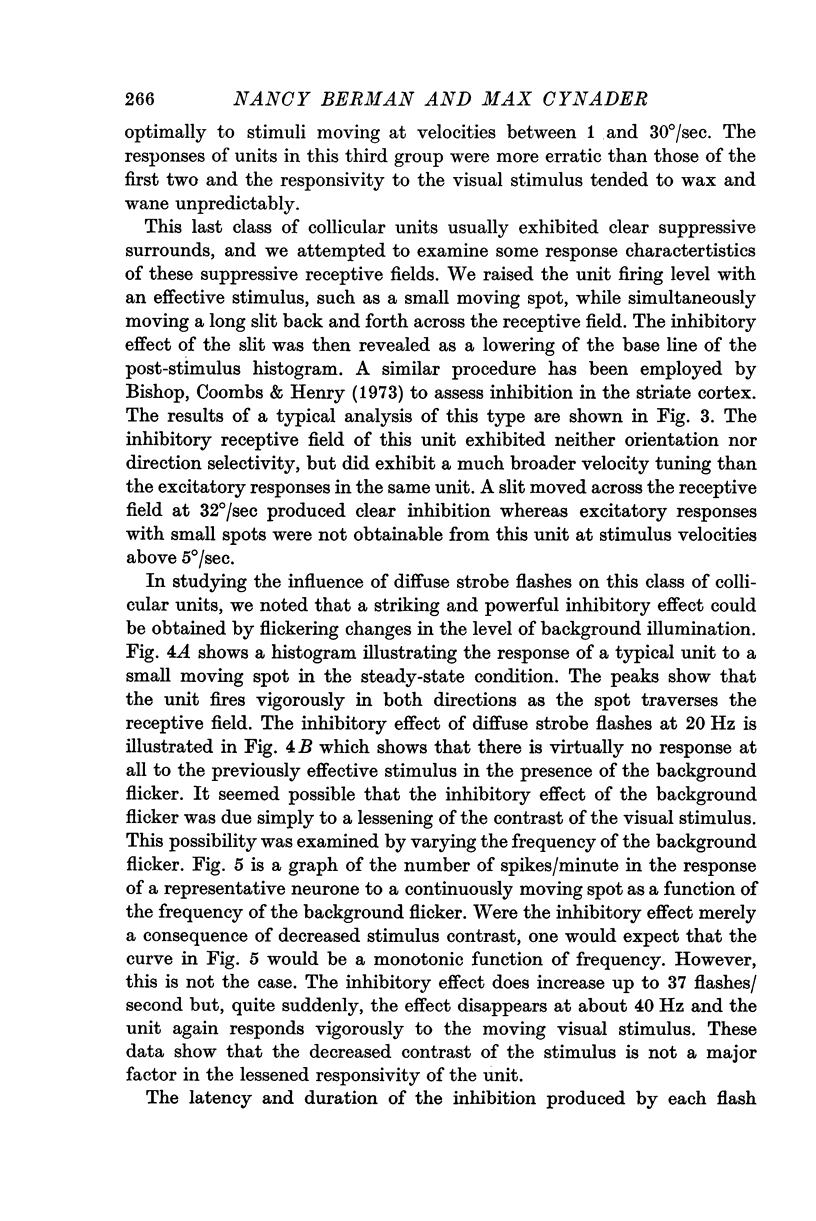
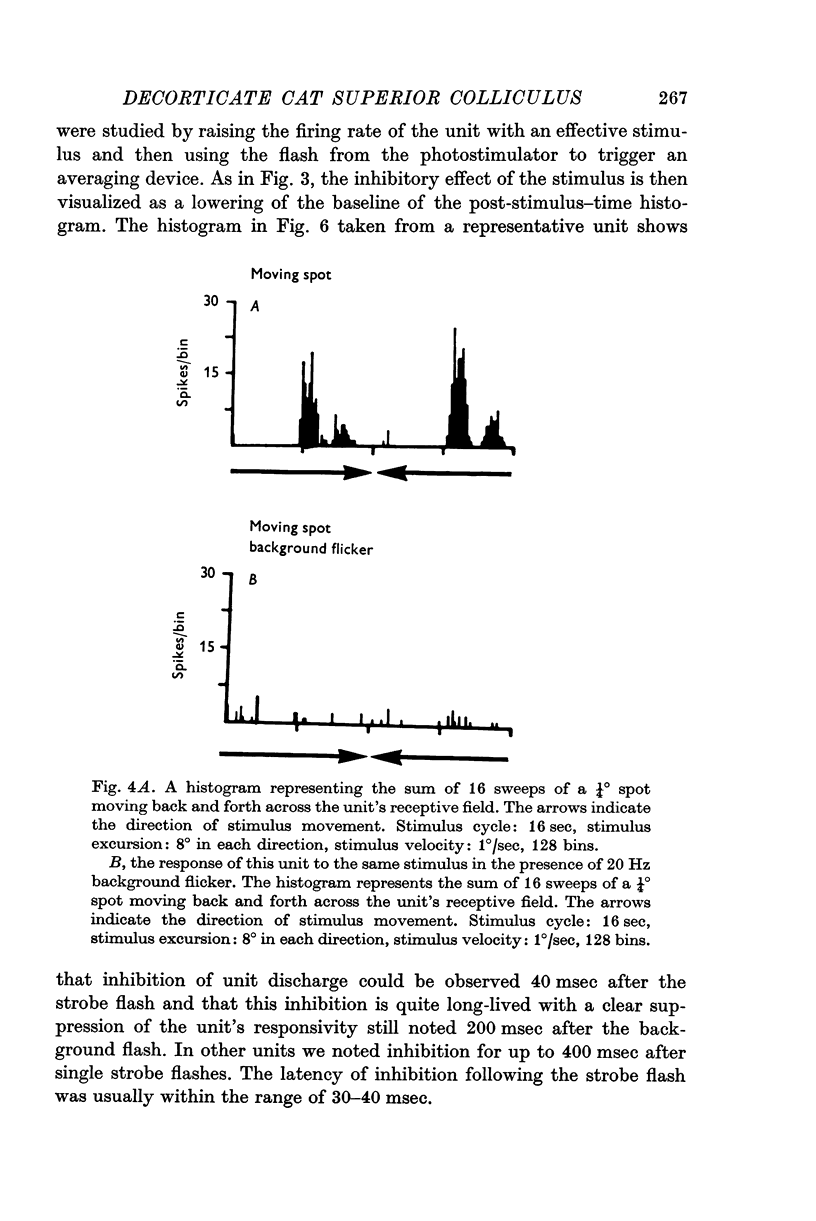
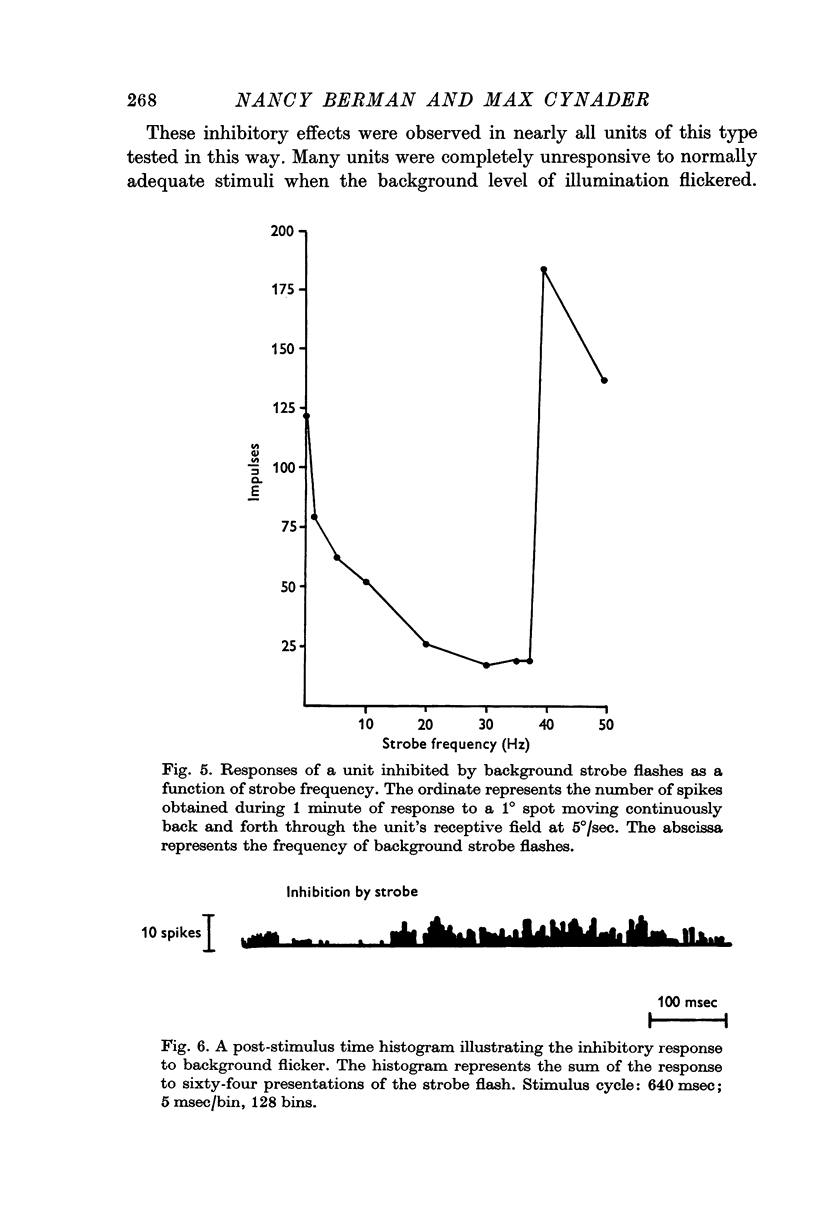
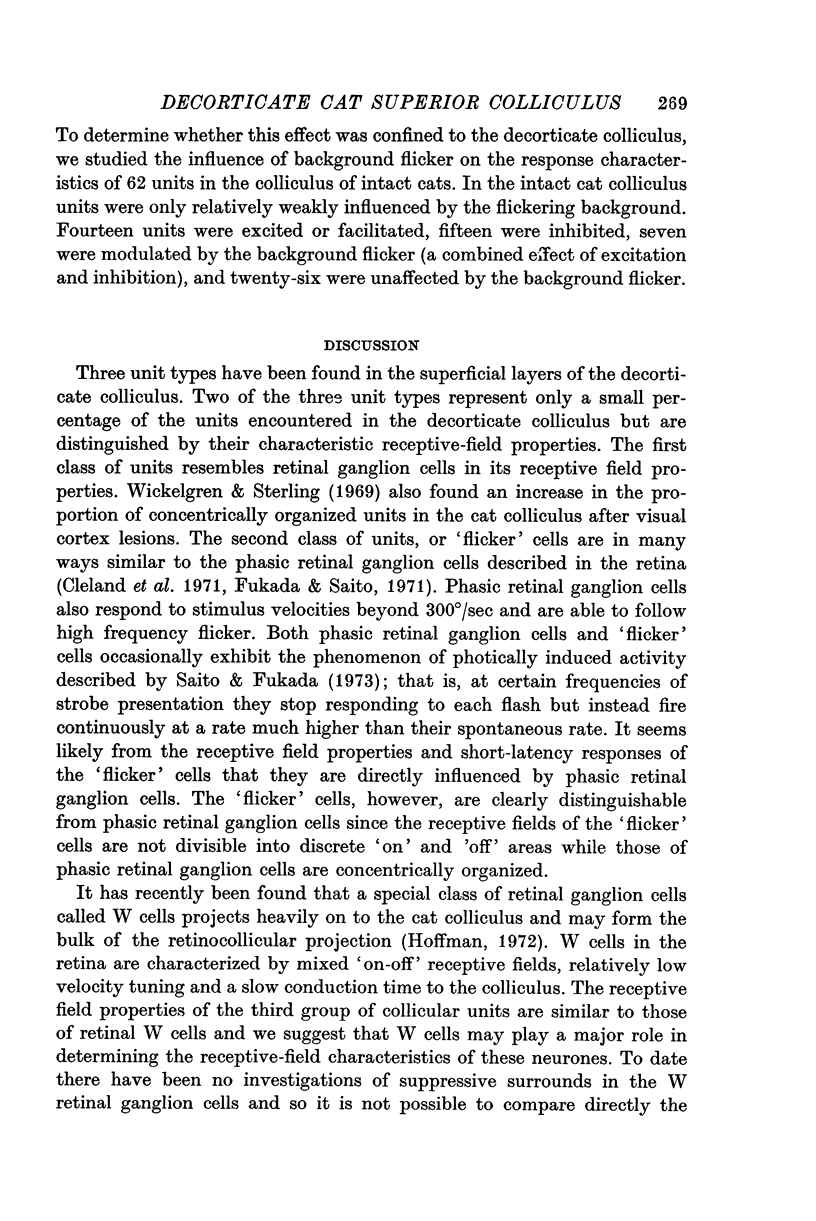
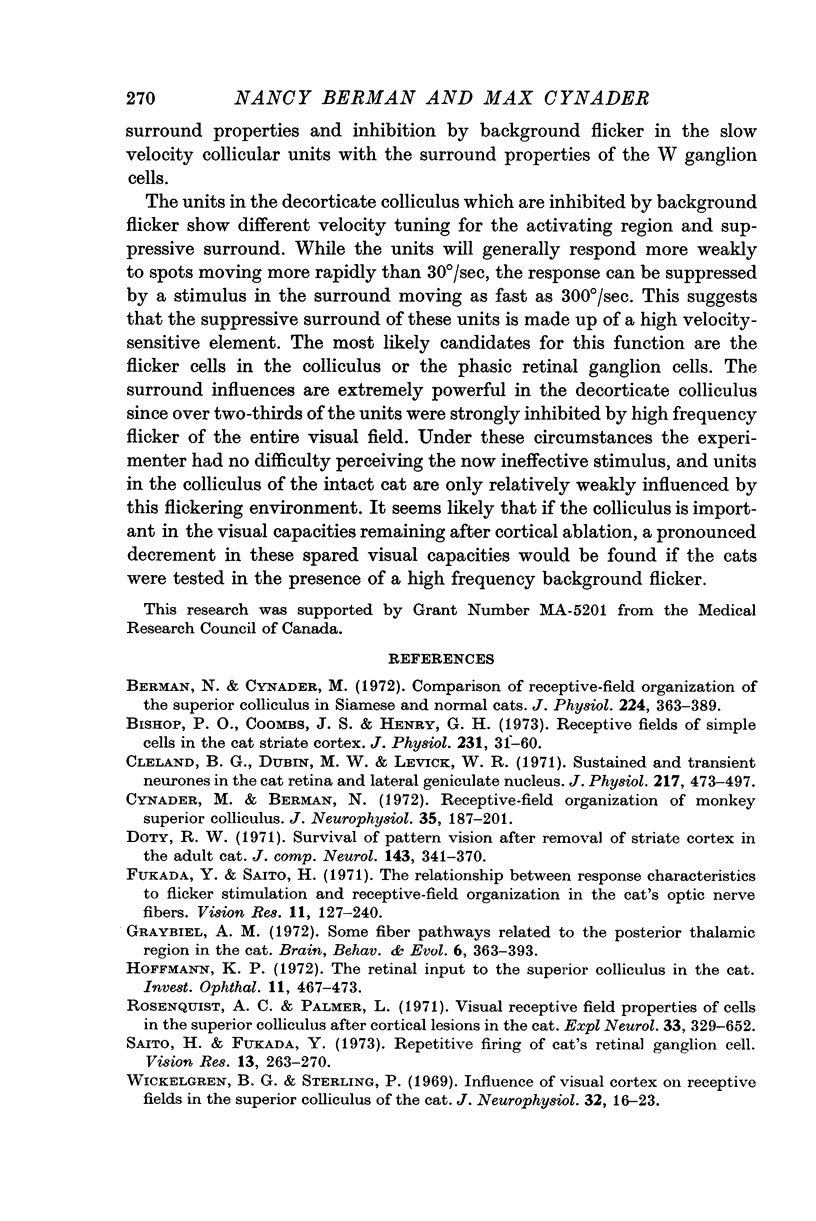
Selected References
These references are in PubMed. This may not be the complete list of references from this article.
- Berman N., Cynader M. Comparison of receptive-field organization of the superior colliculus in Siamese and normal cats. J Physiol. 1972 Jul;224(2):363–389. doi: 10.1113/jphysiol.1972.sp009900. [DOI] [PMC free article] [PubMed] [Google Scholar]
- Cleland B. G., Dubin M. W., Levick W. R. Sustained and transient neurones in the cat's retina and lateral geniculate nucleus. J Physiol. 1971 Sep;217(2):473–496. doi: 10.1113/jphysiol.1971.sp009581. [DOI] [PMC free article] [PubMed] [Google Scholar]
- Cynader M., Berman N. Receptive-field organization of monkey superior colliculus. J Neurophysiol. 1972 Mar;35(2):187–201. doi: 10.1152/jn.1972.35.2.187. [DOI] [PubMed] [Google Scholar]
- Doty R. W. Survival of pattern vision after removal of striate cortex in the adult cat. J Comp Neurol. 1971 Nov;143(3):341–369. doi: 10.1002/cne.901430306. [DOI] [PubMed] [Google Scholar]
- Fukada Y., Saito H. The relationship between response characteristics to flicker stimulation and receptive field organization in the cat's optic nerve fibers. Vision Res. 1971 Mar;11(3):227–240. doi: 10.1016/0042-6989(71)90187-8. [DOI] [PubMed] [Google Scholar]
- Graybiel A. M. Some fiber pathways related to the posterior thalamic region in the cat. Brain Behav Evol. 1972;6(1):363–393. doi: 10.1159/000123723. [DOI] [PubMed] [Google Scholar]
- Hoffmann K. P. The retinal input to the superior colliculus in the cat. Invest Ophthalmol. 1972 Jun;11(6):467–473. [PubMed] [Google Scholar]
- Rosenquist A. C., Palmer L. A. Visual receptive field properties of cells of the superior colliculus after cortical lesions in the cat. Exp Neurol. 1971 Dec;33(3):629–652. doi: 10.1016/0014-4886(71)90133-6. [DOI] [PubMed] [Google Scholar]
- Saito H., Fukada Y. Repetitive firing of the cat's retinal ganglion cell. Vision Res. 1973 Feb;13(2):263–270. doi: 10.1016/0042-6989(73)90105-3. [DOI] [PubMed] [Google Scholar]
- Wickelgren B. G., Sterling P. Influence of visual cortex on receptive fields in the superior colliculus of the cat. J Neurophysiol. 1969 Jan;32(1):16–23. doi: 10.1152/jn.1969.32.1.16. [DOI] [PubMed] [Google Scholar]


